In most cases, that liability falls on the owners, operators, and/or managers of the premises where the outbreak occurred, whether it is a hotel, a hospital, a senior housing facility, a cruise ship, a condominium, an apartment complex, etc.
Legionnaires’ Disease:
Determining Liability
In the matter of a Legionnaires’ disease outbreak, there are many potential parties who may be held liable and, as such, can become targets of a legal action by those persons alleging to have contracted, and suffered from, the disease.
These parties have an obligation to do everything in their power to protect the occupants of their premises from known hazards, as the Legionella bacterium is considered to be.
However, other individuals who potentially may be held liable for damages arising from an outbreak of Legionnaires’ disease include persons or entities responsible for the design, development, engineering, construction, manufacture, installation, maintenance, and/or repair of the building water systems that were found to be faulty or defective and, because of that fault or defect, precipitated or hastened the growth and dissemination of the Legionella bacterium.
Proving Liability
In order for someone to pursue an action against a potentially liable party after a Legionnaires’ disease outbreak, the claimant must prove:
- That he or she was exposed to the Legionella bacterium.
- That he or she was injured on, or at, the premises specified in the action (requires testing and confirmation of the source)
- That the exposure resulted in the contracting of Legionnaires’ disease. (The latency period of legionellosis is from two to fourteen days. If a claimant’s symptoms do not manifest during that period, they cannot be said to be related to an exposure.)
- That the exposure was due to negligence of some kind.
While it is not always simple to prove the first three elements of a claim, it can be accomplished. First, a complete and thorough medical diagnosis of the claimant must substantiate that he or she was exposed to the Legionella bacteria and, because of that exposure, developed the disease. Second, a systematic investigation of the premises where the outbreak was alleged to have occurred, must determine conclusively that the bacteria was present at the time the claimant was on or at the property.
However, it is often very difficult to prove the fourth element – negligence – as well as to specify which persons or entities may be guilty of negligence to a point where they can be held liable for damages. That’s because, according to the law, a viable claim for negligence requires proof that someone breached a requisite “standard of care.” And while the owner or operator of a senior housing facility, for example, might be held liable because it is generally accepted that the care of its residents is an essential responsibility of such an individual, the duty owed by an architect, a general contractor, or a plumber, for example, is a lot more difficult to define and prove.
New Standards Coming
What makes negligence even more difficult to ascertain is the fact that, currently, there are no federal, state, or local codes, statutes or regulations that actually establish a “standard of care” specific to the control of Legionella for any structure or industry outside of healthcare. And while several government agencies, such as the U.S. Centers for Disease Control (CDC), the U.S. Environmental Protection Agency (EPA), the United States Occupational Health and Safety Administration (OSHA), and the Department of Veteran Affairs (VA), as well as many professional associations have published guidelines relating to Legionella control and prevention, they are merely advisory in nature.
However, over the past several years, the American Society of Heating, Refrigeration and Air Conditioning Engineers (ASHRAE) has been drafting a new standard of Legionnaires’ disease control and prevention – Legionellosis: Risk Management for Building Water Systems, better known as “Standard 188.” This November, the final version of Standard 188 is expected to be promulgated and it will apply equally to new and existing facilities, fundamentally altering the obligations of designers, owners, builders, contractors, operators, and property managers responsible for water systems, cooling towers, and other water features in buildings they design, build and maintain.
And if Standard 188 is adopted by a city, county or state building code, it will have the force of law. That means that under the new standard, organizations and individuals are much more likely to be found guilty of negligence in a lawsuit if a simple analysis can prove that proper preventative measures, as specified in the standard, were not taken. And even if it isn’t incorporated into statutory codes, Standard 188 is likely to be considered very seriously by a court whenever a judge is asked to determine an applicable “standard of care” if negligence is alleged in a Legionnaires’ disease outbreak lawsuit.
The Future of Legionnaires’ Disease Liability Lawsuits

The future of Legionnaires’ disease liability lawsuits is somewhat paradoxical. In one respect, it is believed that the number of cases of legionellosis is likely to rise due to several factors, including the deterioration of urban water infrastructures, and the move to low temperature technologies that, while potentially reducing energy costs, may also perpetuate conditions that lead to the growth of the Legionella bacterium. In addition, the medical community is developing faster and more accurate diagnostics that can better identify Legionnaires’ disease, which will, arguably, lead to more reports of its infestation. And, of course, if Standard 188 is adopted, it will give claimants a very formidable weapon in courts of law. All of these factors suggest an increase in Legionnaires’ disease liability lawsuits as time goes on.
On the other hand, insurance underwriters who insure individuals and entities against liable suits, and have a lot to lose should a Legionnaires’ disease lawsuit not go their way, as well as those professionals who might expect to be covered under Standard 188, have an increasingly urgent mandate to mitigate the risks in their buildings and facilities.
New concepts of design and construction may also contribute to the eradication of the conditions conducive to Legionella growth. So, it is just as possible that Legionnaires’ disease outbreaks and their subsequent lawsuits might, if fact, diminish over time, as the potentially liable parties seek to minimize the financial penalties inherent in losing a lawsuit due to provable negligence.
That being said, if you or a loved one has contracted Legionnaires’ disease, you should contact our offices as soon as possible. We will help you determine if you can sue any liable parties for damages, medical expenses, pain and suffering and/or lost wages.
Contact Johnny Denenea, The Legionnaires’ Lawyer, If You Think You’ve Been Exposed to Legionnaires’ Disease
If you or a loved one has contracted Legionnaires’ disease, you may have a viable Legionnaires’ lawsuit and be entitled to compensation. Don’t wait, contact me today for a free consultation so I can personally evaluate your case.
Do You Have a Case?
Are You Entitled to Compensation?
Contact The Legionnaires’ Lawyer for a Free Consultation
You pay absolutely nothing unless we are able to receive a settlement or jury award for your case.








